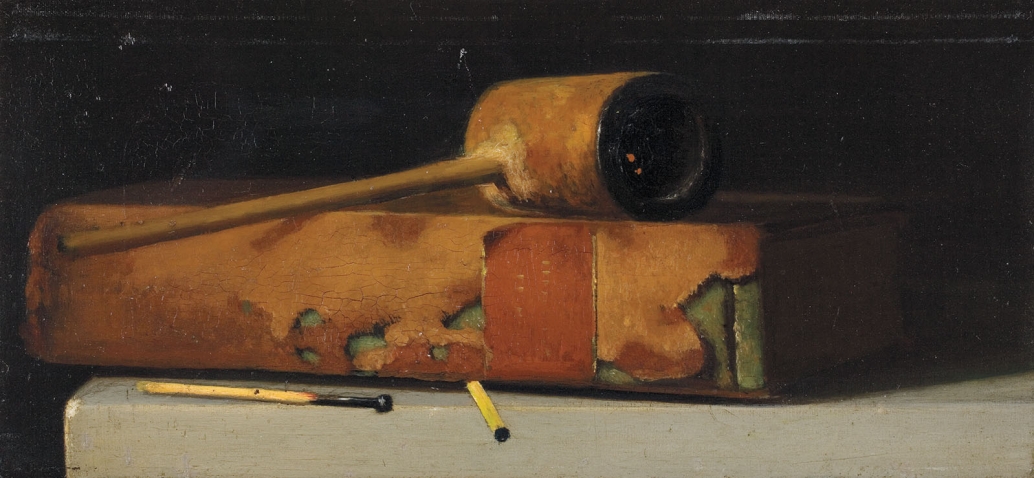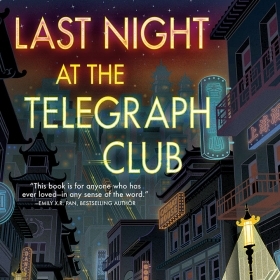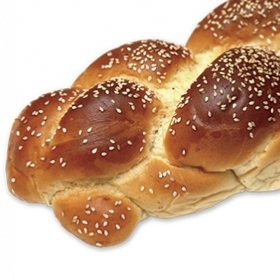John Frederick Peto (1854–1907), Still Life with Pipe and Book, late 19th or early 20th century, oil on panel, 4½ in. x 9 in.
Museum purchase with funds provided by Wellesley College Friends of Art
John Peto was among a number of artists in the late 19th century who practiced an extreme version of still-life illusionism known as trompe l’oeil. Paintings by these artists often depicted common or humble objects—such as books, ribbons, newspaper clippings, nails, old envelopes, and currency—and were painted with such precision that they could deceive a viewer into thinking they were real. Indeed, trompe l’oeil paintings were sometimes hung in saloons or shops, where debates about the convincing illusion could only be settled by touching the surface of the work. Although critics at the time ranked still-life subjects low in the hierarchy of painting genres, below grander subjects such as historical and classical themes or landscapes, trompe l’oeil painting was “rediscovered” by artists of the mid-20th century who found the genre’s trickery and poignant social commentary an appealing precursor to surrealist games and modernist abstraction.
Peto’s Still Life with Pipe and Book, which hangs in the Davis Museum, presents a spare composition of just a few objects that emerge from a dark interior. A single book with a decaying cover rests on the corner of a pale grey shelf, and although the spine of the book faces the viewer, an identifying title that might imbue the painting with narrative content has been worn away. A pipe has been placed on top of the book and two matches rest precariously at the edge of the shelf. The small size of the panel suggests that the book and pipe have been represented at actual scale, and the compressed space emphasizes the horizontal forms that angle forward out of the picture plane. The slight diagonal of the pipe’s stem animates the composition and activates a sense of instantaneity, as if the smoker has just set down his pipe a moment ago. In fact, Peto has depicted the still-smoldering tobacco in the pipe’s bowl with tiny flecks of red paint. A blackened, used match has been casually set down, and another match protrudes from underneath the book, deceptively entering the viewer’s own space. This painting is alternatively known as A Gentleman’s Pleasure, and these simple items suggest the quiet activities of reading and smoking in a private setting. The work is deeply intimate, yet also anonymous and universal, and perhaps evokes the contemplative stillness of our own domestic moments in these strange and terrible pandemic months.
The Davis Museum is closed until further notice, but you can tour the virtual galleries (see page 7) or view virtual exhibits—including The Antioch Mosaics at Wellesley College and Martin Luther: Print and Protest—at wellesley.edu/davismuseum.








We ask that those who engage in Wellesley magazine's online community act with honesty, integrity, and respect. (Remember the honor code, alums?) We reserve the right to remove comments by impersonators or comments that are not civil and relevant to the subject at hand. By posting here, you are permitting Wellesley magazine to edit and republish your comment in all media. Please remember that all posts are public.